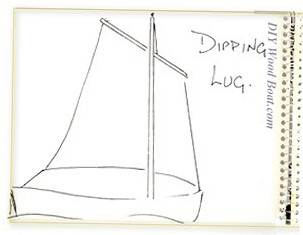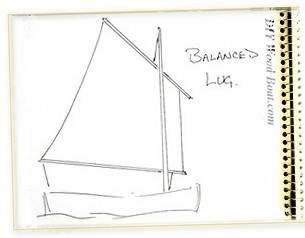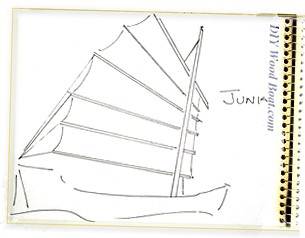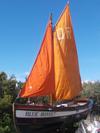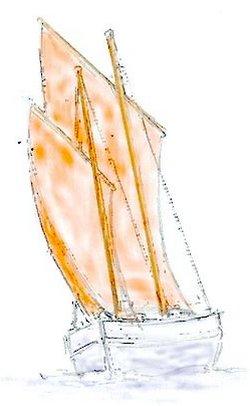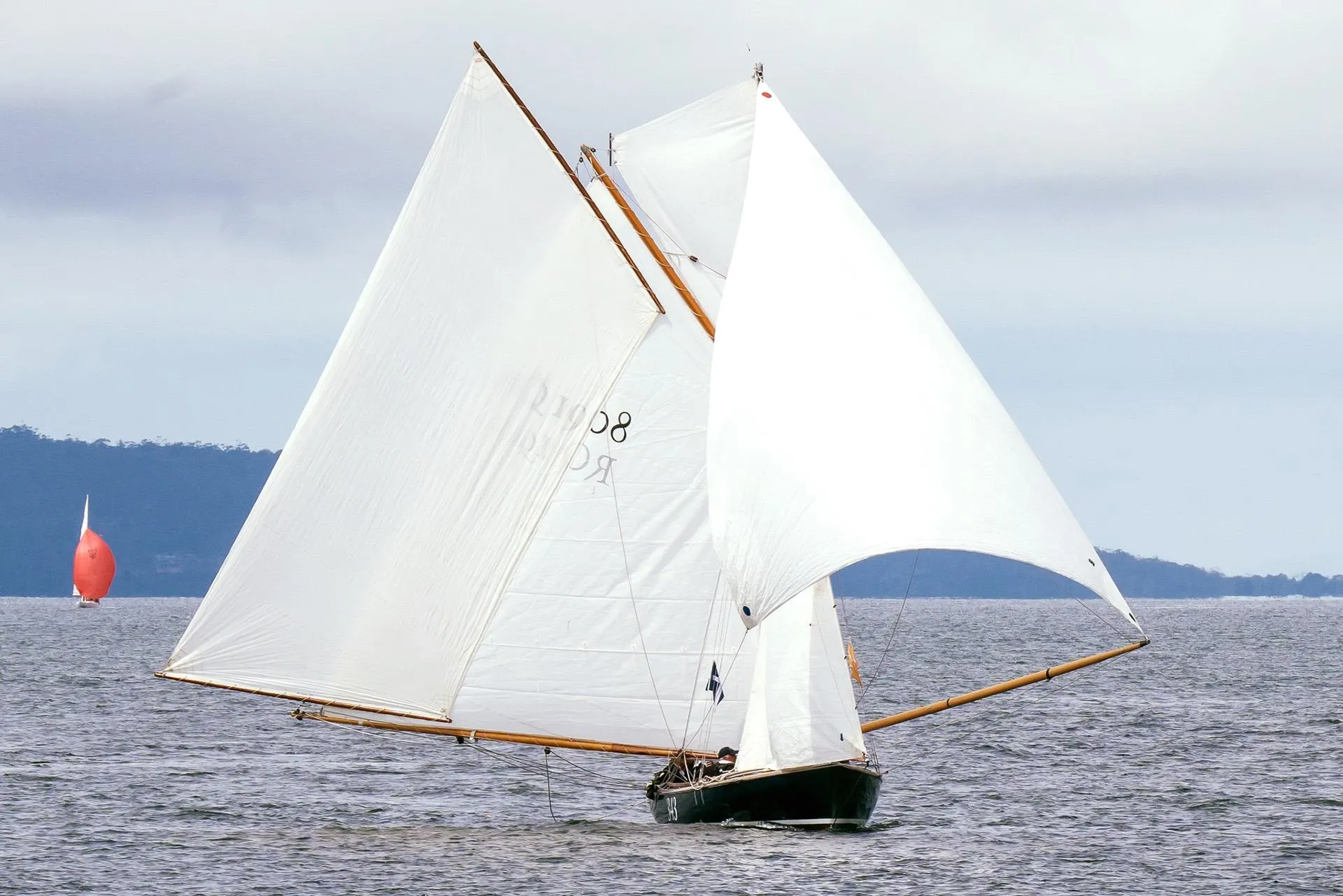- Home
- Ropes and Rigs
- Sailing Rigs
- Sail Cloth
- Lug Rigs
Lug Rigs
Sailors have
been using Lug Rigs for centuries because of their unique sailing
abilities.
The lug combines the efficiency of a square sail, when running before the wind with the windward ability of a fore and aft rig.
Like a
square sail, the lug’s sail is suspended from a
gaff.
However, unlike the square sail the halyard is not attached to the center of the gaff but closer to the leading edge.
There are four basic types of lug sail.
The gaff sail and sprit sail are also four cornered rigs but their sail
hangs completely behind the mast.
This does mean that the mast doesn’t interfere with the sail making it
cleaner.
However,
this does put the center of effort well behind the mast which requires
more staying to hold the mast upright and makes it more difficult to
control twist in the sail.
Too much twist will mean that while the bottom of the sail is drawing
the top will stall.
Too much twist can also mean that the sail will tend to drive
downwards, increasing the healing moment.
Lug rigs, with their center of effort further forward overcome these problems.
Dipping Lug.
The dipping lug is so called because each time the boat tacks or gibes the whole sail and gaff must be brought around to the leeward side of the mast.
This prevents the mast spoiling the shape of the sail if it where to be left on the leeward side.
The problem with using this sail is the coordination needed to quickly dip the sail when tacking.
For this reason it is generally used on boats which are likely to travel long distances on one tack.
It is also why most recreational craft use standing or balance lugs.
More on the Dipping Lug Rig
Standing Lug.
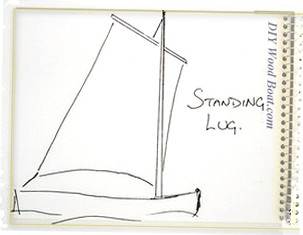 Standing Lug
Standing LugWith the standing lug, the yard and sail usually remain on one side of the mast.
In the west, lug rigs traditionally mount the sail on the port side, which probably accounts for the rule for giving way to boats on starboard tack.
However, it can be fitted with a tripping line from the throat which allows the gaff to be dipped.
The tack of this rig is set close to the mast.
Like the dipping lug it is usually loose footed.
affiliate linksBalanced Lug.
The balanced lug is similar to the standing lug, except that it has a boom.
And the boom extends beyond the mast, the tack being affixed back from its leading edge.
This allows more of the sail’s leading edge to extend in front of the mast.
This means that the sail is more balanced, hence the name.
This is an ideal rig for small boats with short masts as the sail can be peaked up high and needs a minimum of rigging.
More on the Balanced Lugsail
Chinese Lug Rig.
The Chinese Lug or Junk Rig is similar to the balanced lug except that it is full battened
The Junk has been in use in a myriad of styles and on boats of all sizes for centuries in East Asia.
The Chinese navy
circumnavigated the globe, in their Junks in the fifteenth century
while European sailors were still coming to terms with the idea that
the world was spherical.
Previous posts
See What Others Have Posted
Standing lug info.
STANDING LUG INFO: I am restoring a Navy 3-1 27ft whaler.
When I got the ship it was a wreck and had no mast, some odd bits of rigging and two sails. …
Beer (revolver) Lug Rig
I'm looking for any information I can get on some points that are basic to an ongoing ancient vessel design project, and hope that maybe someone reading …
